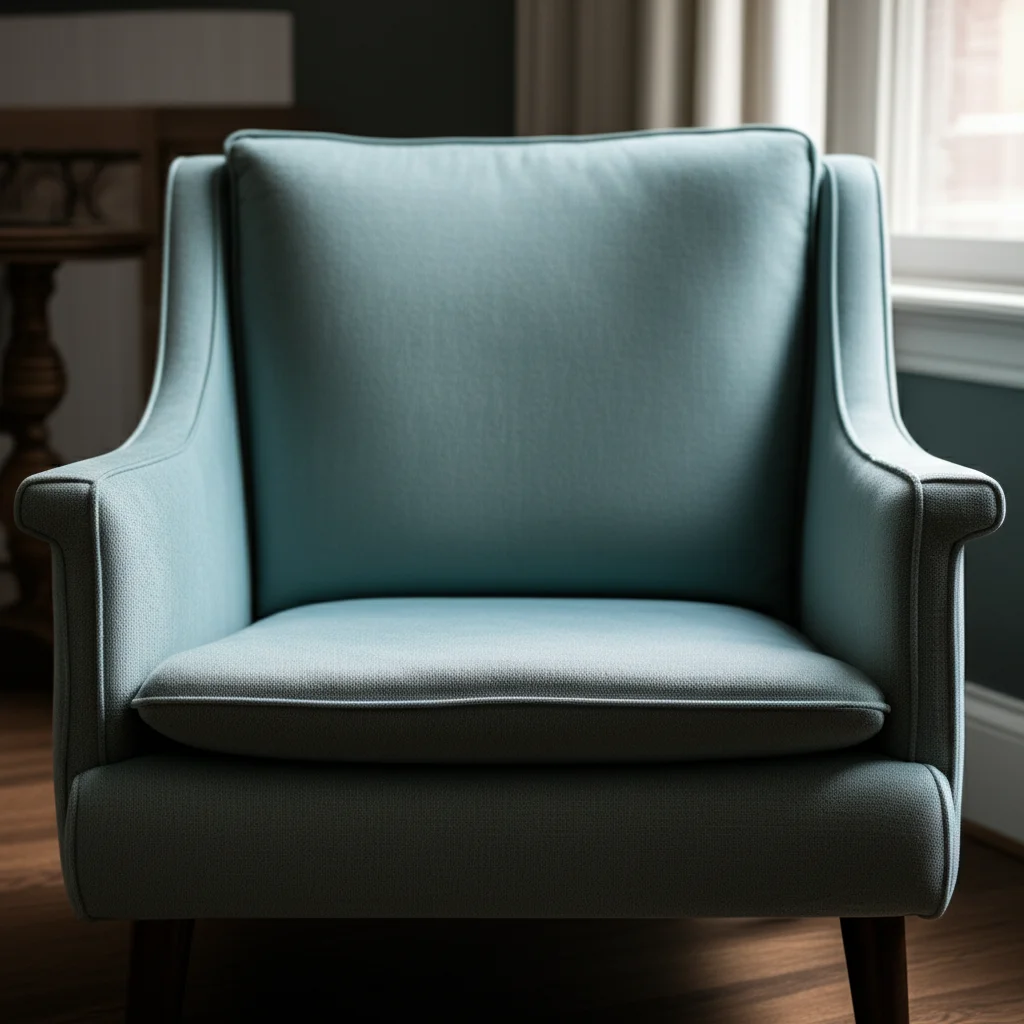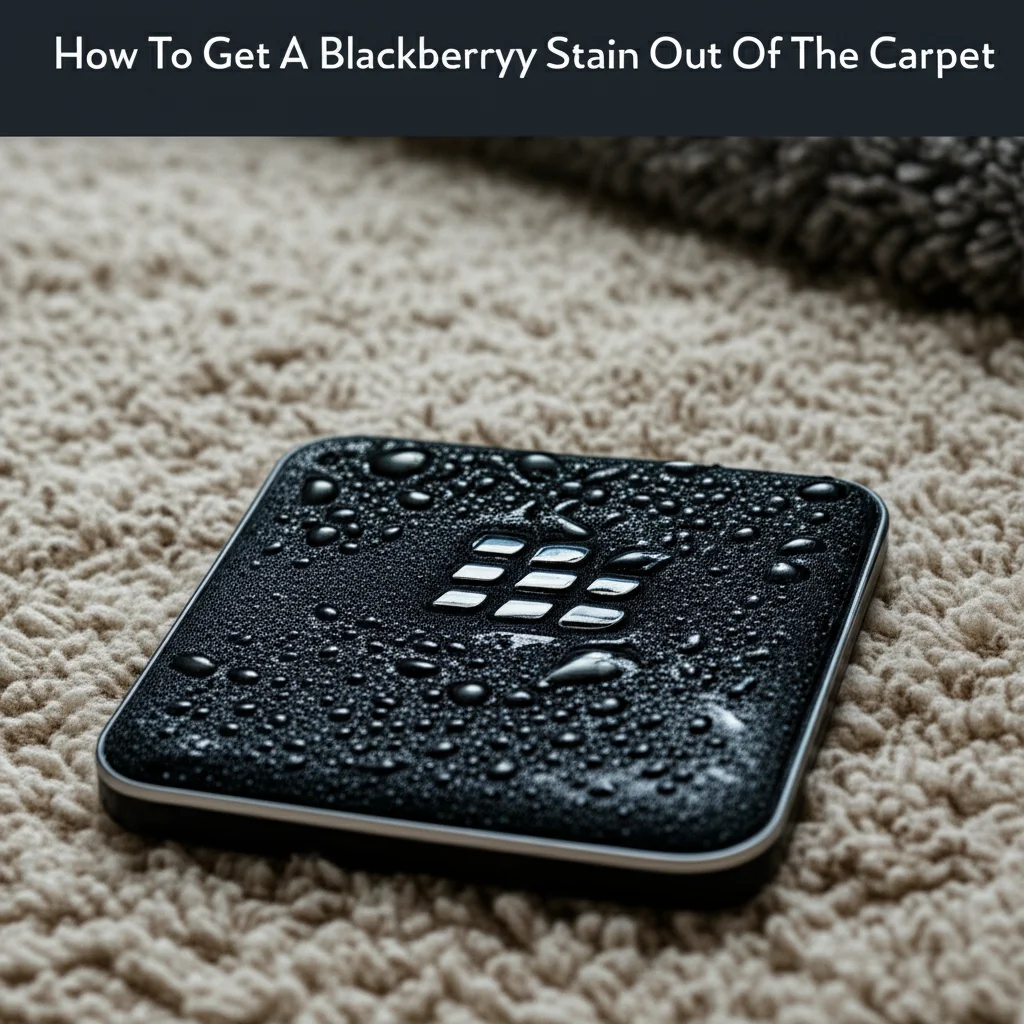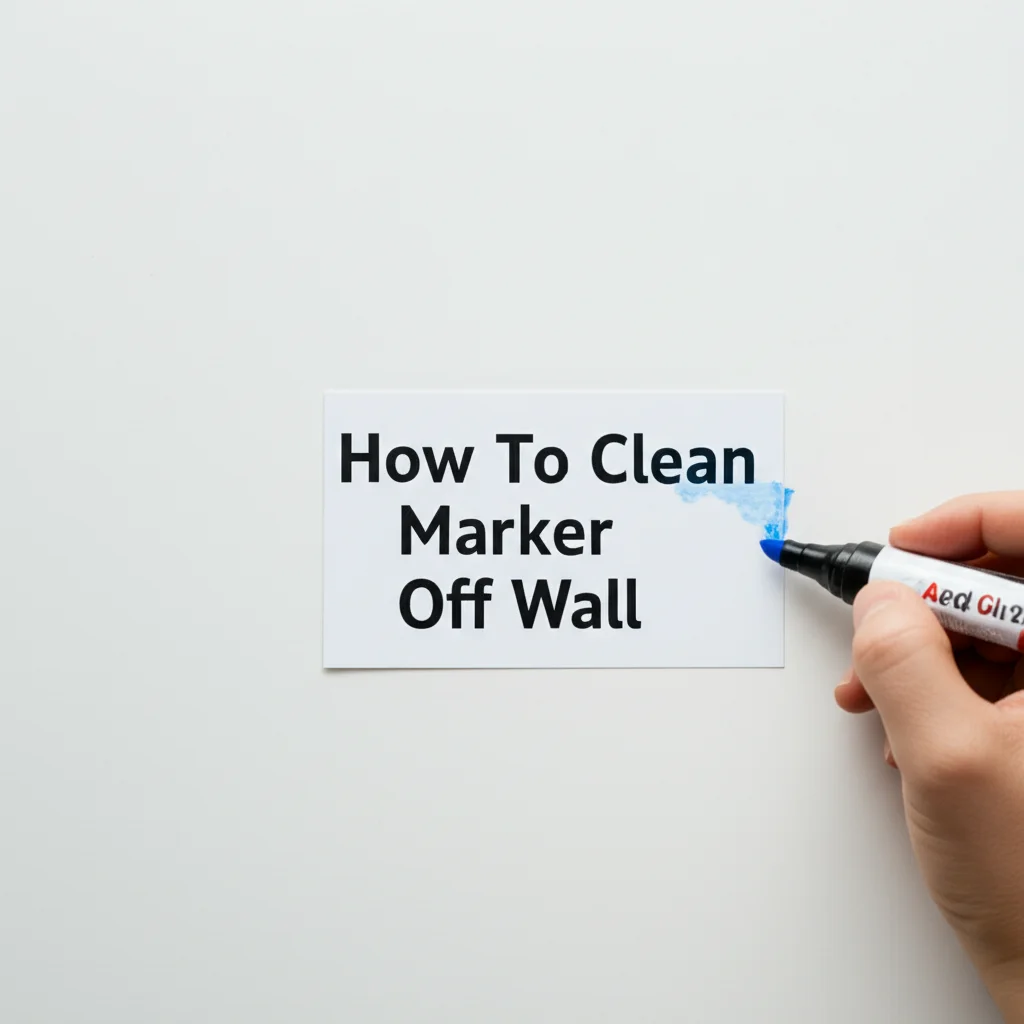· Todd Martin · Home Care · 20 min read
How To Clean Suede Coat

Mastering Suede Coat Cleaning: Your Ultimate Guide
Suede coats offer a touch of elegance and warmth to any wardrobe. However, their unique texture and delicate nature make them susceptible to dirt, dust, and stains. Knowing how to clean a suede coat properly is essential for maintaining its luxurious appearance and extending its lifespan. Many people feel intimidated by cleaning suede, fearing they might damage the material. My goal here is to show you a simple, effective way to care for your cherished garment. This guide will walk you through the necessary tools, general cleaning techniques, specific stain removal methods, and crucial maintenance tips. You can keep your suede coat looking pristine for years to come.
Takeaway
- Always test cleaning methods on an inconspicuous area first to avoid damage.
- Address stains immediately to prevent them from setting into the suede fibers.
- Use specialized suede tools like a suede brush and eraser for best results.
- Allow the coat to air dry completely, away from direct heat or sunlight.
- Regular maintenance, including brushing and applying protector spray, extends coat life.
To clean a suede coat, first, gather specialized tools like a suede brush and eraser. Gently brush away loose dirt, then use the eraser on spots. For wet stains, blot them immediately. For oil, apply cornstarch to absorb grease. Always air dry the coat and restore the nap with a brush.
Understanding Suede: Its Unique Properties and Care Needs
Suede is a type of leather with a napped finish. It comes from the underside of an animal hide, typically lamb, goat, pig, or calf. This napped surface gives suede its distinctive soft, fuzzy texture. This texture also makes suede very absorbent. It easily picks up dust, dirt, and moisture. Unlike smooth leather, suede cannot be simply wiped clean with a damp cloth. Water can leave permanent marks. Oil and grease stains are particularly stubborn on suede. The fibers trap these substances deeply, making removal challenging without proper techniques. Understanding these properties is the first step in effective suede coat cleaning.
Suede’s delicate nature means it requires gentle handling. Harsh chemicals or excessive scrubbing can damage the nap and alter the coat’s appearance. Regular care helps prevent deep-seated grime. Brushing the coat after each wear removes surface dust. This simple habit keeps the coat looking fresh. Proper storage also plays a big role in its longevity. Hanging it on a padded hanger in a breathable garment bag protects it from dust and crushing. This material needs a specific approach to cleaning to preserve its look and feel. I have learned over time that patience and the right tools make all the difference.
Considering suede’s porous nature, it is highly susceptible to water damage. Even a light rain shower can leave noticeable spots. These water marks can be difficult to remove once dry. This is why protection is so important. A good suede protector spray creates a barrier. It helps repel water and oil, giving you more time to clean spills. Always apply this protector to a new coat before wearing it. Reapply it periodically, following the product instructions. This proactive step saves a lot of cleaning effort later.
Cleaning suede is not like cleaning other fabrics. You cannot just throw it in the washing machine. Doing so will ruin the coat. The leather can stiffen and crack. The nap will be permanently flattened. Hand-cleaning is almost always the only safe option for home care. Even then, you must use specific methods. Our goal is to lift dirt without saturating the material. This distinction is crucial for successful suede coat care.
Essential Tools for Suede Coat Cleaning
Having the right tools makes a significant difference in how effectively you can clean your suede coat without causing damage. I always recommend gathering all your supplies before you begin. The most important item is a specialized suede brush. This brush typically has soft rubber bristles on one side and stiffer brass or nylon bristles on the other. The rubber bristles are for general cleaning and raising the nap, while the stiffer ones tackle dried-on dirt and scuff marks. A good suede brush is indispensable for everyday maintenance and deeper cleaning alike.
Another crucial tool is a suede eraser, sometimes called a suede rubber. This looks much like a regular pencil eraser but is designed to gently rub away dry dirt, scuffs, and minor stains from suede surfaces. You use it in a similar way, applying gentle pressure and rubbing back and forth over the soiled area. The eraser’s action lifts the dirt without using water or chemicals. This helps prevent further saturation of the delicate material. It is surprising how effective these simple erasers can be on fresh marks.
You will also need a clean, soft cloth, preferably white, to blot away moisture or apply cleaners. Microfiber cloths work well because they are highly absorbent and lint-free. Avoid using colored cloths, as their dyes might transfer to your suede, creating a new, unwanted stain. For liquid spills, paper towels are good for initial blotting. Keep in mind that speed is key when dealing with liquids on suede. The faster you blot, the less the liquid will penetrate.
Depending on the type of stain, you might need additional items. For oil or grease stains, cornstarch or talcum powder is essential for absorption. These powders draw out the oil from the suede fibers. For very stubborn dry marks, a fine-grit sandpaper or emery board can be used with extreme caution. This is only for extreme cases, as it removes a tiny layer of suede. I personally use this as a last resort. Finally, a suede protector spray is vital for preventative maintenance after cleaning. This spray helps to repel future spills and dirt.
- Suede Brush: Features rubber and brass/nylon bristles for versatile cleaning and nap restoration.
- Suede Eraser: A rubber-like tool for rubbing away dry dirt, scuffs, and light stains.
- Clean, Soft Cloths: White, lint-free cloths for blotting and applying solutions.
- Cornstarch or Talcum Powder: Absorbent agents for oil and grease stains.
- Suede Cleaner Solution: A specialized product for deeper cleaning or stubborn stains (optional, but recommended for tougher jobs).
- Suede Protector Spray: Essential for repelling water and stains after cleaning.
- Rubbing Alcohol (Isopropyl Alcohol): For ink or very stubborn grease spots, used sparingly.
General Cleaning of Your Suede Coat
Before tackling specific stains, it is important to perform a general cleaning to remove surface dirt and dust from your suede coat. This initial step prevents you from rubbing existing grime deeper into the fibers. Start by hanging your coat on a sturdy, padded hanger. This helps maintain its shape during the cleaning process. Make sure you are working in a well-lit area so you can clearly see all areas of the coat. Good lighting makes it easier to spot hidden dirt or areas that need more attention.
Begin by using the rubber bristles of your suede brush. Gently brush the entire coat in one direction. This motion helps to dislodge loose dirt, dust, and any dried-on debris. Be thorough but avoid excessive pressure. You want to lift the dirt, not push it in. After brushing in one direction, you can lightly brush in the opposite direction to help lift the nap. This gentle back-and-forth action revitalizes the suede’s texture. Think of it as giving your coat a good dusting.
For any scuffs or lightly soiled areas, bring in your suede eraser. Rub the eraser gently over the mark, just as you would erase a pencil mark. The eraser works by lifting the dirt particles away from the suede fibers. You will see some residue from the eraser; simply brush it away with your suede brush. This method is surprisingly effective for common surface blemishes that don’t involve liquids or oils. I always keep a suede eraser handy for quick fixes. It’s perfect for addressing the kind of minor scuffs you might get from daily wear, much like how you might clean dirt off suede shoes.
If your coat has developed a slight sheen or matted areas from wear, the stiffer, brass-bristle side of your suede brush can help. Use very light, short strokes over these areas. The brass bristles are designed to gently raise the matted nap without scratching the surface. Always use extreme caution with the brass side, as too much pressure can damage the suede. This step helps restore the coat’s uniform texture. After this general cleaning, your coat should look much fresher and be ready for any specific stain treatments if needed.
Finally, give the coat another light brushing with the rubber bristles to ensure the nap is evenly restored. This general cleaning process is a crucial foundation. It prepares the coat for more intensive stain removal if necessary. Consistent general cleaning prevents minor dirt from becoming major problems. Regular care keeps your coat looking its best.
Targeted Stain Removal on Suede Coats
Suede coats are beautiful, but they are also magnets for stains. Dealing with specific stains requires different approaches. Prompt action is always best. The longer a stain sits, the harder it becomes to remove.
Water Stains
Water stains are common on suede and can be very visible. If your coat gets wet, do not panic. First, blot the wet area immediately with a clean, dry cloth or paper towel. Do not rub, just blot to absorb as much moisture as possible. Once the area is slightly damp, you can try to “feather” the stain. Lightly spray clean water over the entire stained area until it is evenly damp, not soaked. Use a suede brush to gently brush the damp area back and forth. This helps to redistribute the water and prevent a harsh water line. Allow the coat to air dry completely. This method works by blending the water mark into the rest of the fabric. Some experts even suggest using a very fine mist of water across the entire panel to avoid new ring marks. This can be a bit scary, but it often works wonders. It is similar to how you might approach cleaning suede insoles of sandals if they get wet.
Oil and Grease Stains
Oil and grease stains are tricky on suede due to its absorbent nature. For fresh oil stains, sprinkle a generous amount of cornstarch or talcum powder directly onto the stain. The powder will absorb the oil. Let it sit for several hours, or even overnight, giving it time to work. The longer it sits, the more oil it can draw out. After waiting, gently brush away the powder with your suede brush. Repeat this process if the stain persists. This method is highly effective for new grease marks. For older, set-in oil stains, you might need a specialized suede cleaner. Always follow the product directions carefully. I have found this cornstarch trick works on many surfaces, like how to clean grease stains on other fabrics.
Mud and Dirt Stains
Never try to clean wet mud from suede. This will only spread the dirt and push it deeper into the fibers. Let the mud dry completely. Once dry, gently scrape off any large chunks of mud using a dull knife or the edge of a credit card. Be very careful not to scratch the suede. After removing the excess, use the stiff bristles of your suede brush to brush away the remaining dried dirt. Brush in multiple directions to lift all particles. If a faint stain remains, use your suede eraser on the spot. This method is effective because it treats the mud as a dry substance. It prevents the moisture from the mud from creating a water stain. It is similar to how you might tackle dirt off suede shoes.
Ink Stains
Ink stains are among the most challenging to remove from suede. For fresh ink, place a clean paper towel under the stained area if possible. Dab the stain lightly with a cotton swab dipped in rubbing alcohol (isopropyl alcohol). Do not rub, as this can spread the ink. Work from the outside of the stain inwards. Use a fresh part of the swab for each dab. The alcohol helps to dissolve the ink. Allow the area to air dry. This process may require several applications. For stubborn or old ink stains, professional cleaning is often the best option. Using too much alcohol can damage the suede, so proceed with caution.
Mold and Mildew
If your suede coat develops mold or mildew, it indicates a moisture problem. Take the coat outside to brush off as much surface mold as possible with a suede brush. This prevents mold spores from spreading indoors. Mix a small amount of rubbing alcohol with an equal part of water. Lightly dampen a clean cloth with this solution. Gently wipe the affected areas. The alcohol helps kill the mold spores. Allow the coat to air dry completely in a well-ventilated area, but not in direct sunlight. Ensure the coat is thoroughly dry before storing it again. This method is similar to how one might approach cleaning mold off shoes. Proper ventilation and dryness are key to preventing mold from returning.
Proper Drying and Restoration of Suede’s Nap
After you have cleaned your suede coat, whether it was a general cleaning or stain removal, proper drying is critical. Incorrect drying can lead to stiff, discolored, or misshapen suede. The most important rule is to always air dry your suede coat. Never use direct heat sources like hair dryers, radiators, or direct sunlight. High heat can cause the suede to shrink, crack, or become irreversibly stiff. It can also damage the natural oils in the leather, leading to a brittle texture. Patience is key during this stage.
Hang your coat on a wide, padded hanger to maintain its original shape. Avoid wire hangers, as they can create unsightly indentations in the shoulders. Place the coat in a well-ventilated area away from direct sunlight or heat. A room with good airflow, perhaps near an open window but not in a draft, is ideal. Allow the coat to dry naturally and completely. This process can take several hours, or even a full day, depending on how much moisture the suede absorbed during cleaning. It is essential that the coat is completely dry before you move to the next step or store it away. Any residual moisture can lead to mildew or mold growth, which is a common problem with delicate fabrics.
Once the coat is thoroughly dry, you will likely notice that the nap, or fuzzy surface, has become matted or flattened. This is a normal occurrence after suede has been cleaned or wet. Now is the time to restore its soft, velvety texture. Take your suede brush and gently brush the entire surface of the coat. Use the soft rubber bristles first, brushing in one direction, then lightly in the opposite direction. This action helps to lift and separate the individual suede fibers, bringing back the coat’s original softness and appearance.
For particularly stubborn matted areas or if the nap feels stiff, you can use the stiffer brass side of your suede brush. Use very light, short, gentle strokes. The goal is to fluff up the fibers, not to aggressively scrub the surface. If you see any remaining minor scuffs or shiny spots, gently rub them with your suede eraser before brushing again. This final brushing step ensures the coat looks uniform and feels soft to the touch. This attention to detail in drying and nap restoration makes your cleaning efforts worthwhile.
Preventative Care and Long-Term Maintenance for Suede Coats
Preventative care is just as important as cleaning when it comes to maintaining your suede coat’s beauty and longevity. A little effort upfront can save you a lot of cleaning hassle later. My first recommendation for any new suede coat is to apply a high-quality suede protector spray. This spray creates an invisible barrier on the suede surface, helping to repel water, oil, and other stains. It does not make your coat waterproof, but it gives you crucial time to blot spills before they set in. Apply the spray evenly in a well-ventilated area, following the product instructions. Allow it to dry completely before wearing the coat. Reapply the protector periodically, perhaps once every six months or after a deep cleaning.
Regular brushing is another cornerstone of suede coat maintenance. After each wear, especially if you have been out in dusty or dirty environments, give your coat a quick brush with a suede brush. Use the rubber bristles to gently brush away surface dust and loose dirt. This simple habit prevents grime from accumulating and embedding into the fibers. It also helps to keep the nap lifted and looking fresh. Consistent brushing helps maintain the coat’s uniform texture and prevents matted spots from forming. It’s a quick way to keep your coat looking sharp between deeper cleans.
Proper storage also plays a significant role in long-term maintenance. When not wearing your suede coat, hang it on a sturdy, padded hanger. This helps to preserve its shape and prevents creases or stretching. Store it in a cool, dry place away from direct sunlight and humidity. Sunlight can cause the color to fade, while humidity can encourage mold and mildew growth. Using a breathable garment bag is also highly recommended. A breathable bag protects the coat from dust and helps prevent it from drying out or becoming stiff. Avoid plastic garment bags, as they can trap moisture and chemicals, which are harmful to suede.
If your coat gets wet in the rain, never hang it near a heat source. Simply blot off excess water with a clean towel and let it air dry naturally on a padded hanger. Once dry, brush the nap to restore its texture. For minor scuffs or marks that appear between deep cleanings, use your suede eraser. These small, immediate actions prevent minor issues from becoming major problems. By consistently following these preventative care steps, you can significantly extend the life and beauty of your suede coat.
When to Seek Professional Suede Cleaning
While many minor spills and general dirt can be managed at home, there are times when professional suede cleaning is the wisest choice. Recognizing when to call in the experts can prevent irreversible damage to your valuable coat. One clear indicator is the presence of very large, set-in, or multi-layered stains. For example, a large oil stain that has been absorbed deeply into the suede, or a combination of dirt and liquid that has dried, can be incredibly difficult to remove without specialized equipment and solvents. Attempting to tackle such stains at home often results in spreading the stain or damaging the suede’s nap or color.
Another reason to seek professional help is when your suede coat has an overall dingy or discolored appearance. If the entire coat looks dull, faded, or has lost its vibrancy, it might require a more comprehensive cleaning process that home methods cannot provide. Professionals have access to large-scale cleaning machines and specific solvents designed to refresh the entire garment evenly. They can often restore the original richness of the color and the uniform texture of the suede. If your coat has been stored improperly and has developed widespread mildew or an unpleasant odor that general cleaning does not remove, professional treatment is also advisable.
Serious damage, such as rips, tears, or extensive scuffing that has worn away the nap, also warrants professional attention. While a cleaner might not be able to fully repair structural damage, they can often clean the garment without exacerbating the problem. Some professional cleaners also offer repair or re-dyeing services. If your suede coat has shrunk or stiffened after an accidental washing or exposure to excessive heat, a professional might be able to relax the fibers and restore some of its original softness, though complete recovery is not always guaranteed.
Always choose a dry cleaner that specializes in leather and suede. Not all dry cleaners are equipped to handle these delicate materials. Ask about their experience with suede coats and inquire about their specific processes. A reputable suede cleaner will likely inspect your coat thoroughly and discuss the potential outcomes before accepting the garment. They understand the nuances of different suede types and how to treat them without causing damage. Entrusting your coat to specialists ensures the best possible outcome for complex cleaning challenges. It protects your investment in a beautiful garment.
FAQ Section
Can I wash a suede coat in a washing machine?
No, never wash a suede coat in a washing machine. The harsh agitation and water saturation will strip natural oils, causing the suede to shrink, stiffen, crack, and lose its texture and shape. Suede requires gentle, localized cleaning or professional care.
How do I remove water stains from suede?
To remove water stains, lightly dampen the entire stained area with a fine mist of clean water. Gently brush the damp area with a suede brush to evenly distribute the moisture and blend the mark. Allow the coat to air dry completely, then re-brush the nap.
What if my suede coat gets wet in the rain?
If your suede coat gets wet in the rain, gently blot off excess moisture with a clean, dry cloth immediately. Do not rub. Hang the coat on a padded hanger in a well-ventilated area to air dry naturally, away from direct heat or sunlight. Once dry, brush the nap to restore its texture.
How often should I clean my suede coat?
The frequency of cleaning depends on how often you wear your suede coat and its exposure to dirt. For regular wear, brush it after each use to remove surface dust. Deep cleaning for stains or overall dinginess should be done as needed, typically once a year or less.
Can I use home remedies like vinegar on suede?
Avoid using common home remedies like vinegar or baking soda on suede. These substances can cause discoloration, alter the texture, or leave permanent marks due to suede’s delicate and absorbent nature. Stick to specialized suede cleaners or dry cleaning.
What is the best way to store a suede coat?
Store a suede coat on a sturdy, padded hanger in a cool, dry, well-ventilated closet. Use a breathable garment bag to protect it from dust. Avoid plastic bags, as they can trap moisture and cause damage. Keep it away from direct sunlight and humidity.
Conclusion
Cleaning a suede coat might seem daunting at first, but with the right tools and techniques, you can keep your beloved garment looking impeccable for many years. We have explored the unique characteristics of suede, which make it susceptible to stains but also highlight the importance of gentle, specific care. From essential tools like the suede brush and eraser to targeted methods for various stains like water, oil, and mud, you now have a comprehensive guide at your fingertips. Remember that proper drying and dedicated nap restoration are just as vital as the cleaning itself.
My hope is that this guide empowers you to tackle common suede coat cleaning challenges with confidence. Consistent preventative care, such as applying a protector spray and regular brushing, will significantly reduce the need for intensive cleaning. However, for those stubborn or widespread issues, do not hesitate to seek out a professional cleaner specializing in suede. Your suede coat is an investment in style and comfort. By following these steps, you are not just cleaning a garment; you are preserving its beauty and ensuring its longevity. Take pride in knowing how to care for your coat properly, and enjoy its unique charm for seasons to come.
- suede cleaning
- coat care
- stain removal
- leather care
- garment maintenance
- diy cleaning





